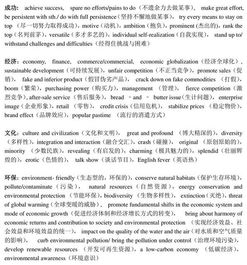Title: Summary of Translating Chinese to English in the Postgraduate Entrance Examination
In the realm of language proficiency assessment, translating Chinese to English stands as a critical component, especially in the context of the postgraduate entrance examination. This summary aims to provide insights and strategies for effectively tackling this aspect of the examination.
Translating from Chinese to English involves more than mere substitution of words. It demands a deep comprehension of both languages’ grammar, syntax, and cultural nuances. Candidates must grasp the essence of the original text and convey it accurately in English.
Despite adequate preparation, candidates often encounter stumbling blocks. Some common pitfalls include:
- Literal Translation: Avoiding wordforword translation is imperative. Instead, focus on conveying the intended meaning while adapting to English language conventions.
- Ignoring Context: Neglecting the context of the original text leads to inaccuracies. Understanding the background, purpose, and tone of the passage aids in producing contextually appropriate translations.
- Overlooking Idioms and Colloquialisms: Directly translating idiomatic expressions often results in confusion or loss of meaning. Familiarizing oneself with common idioms and their English equivalents mitigates this issue.
- Neglecting Proofreading: Rushing through translations without reviewing for errors compromises quality. Allocating time for thorough proofreading ensures the final translation is polished and errorfree.

Translating Chinese to English in the postgraduate entrance examination necessitates a multifaceted approach encompassing linguistic proficiency, cultural awareness, and strategic execution. By adopting effective strategies, avoiding common pitfalls, and engaging in consistent practice, candidates can enhance their translation skills and optimize their performance in this crucial aspect of the examination.
版权声明
本文仅代表作者观点,不代表百度立场。
本文系作者授权百度百家发表,未经许可,不得转载。











